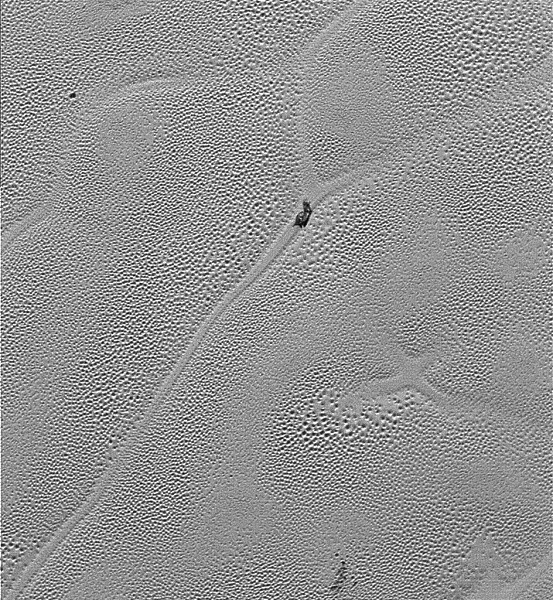By Ana Verayo, | January 11, 2016

Transmitted to Earth on Dec. 24, 2015, this image from the Long Range Reconnaissance Imager (LORRI) extends New Horizons’ highest-resolution swath of Pluto to the center of Sputnik Planum, the informally named plain that forms the left side of Pluto’s “he
NASA just revealed the latest photograph of Pluto, captured by the New Horizons spacecraft where scientists spotted a mysterious "X" on the surface of the dwarf planet, suggesting intriguing surface activity.
Like Us on Facebook
This latest photo was transmitted back to Earth last December 24 from the last planet near the edge of the solar system. NASA says that this newest image reveals high resolution views of Pluto, extending to the center of Sputnik Planum, which is comprised of icy plains, forming the left region of Pluto's heart shaped feature.
Most of the icy plains are located at a lower elevation as opposed to the surrounding environment, where it is also not completely flat as its surface area is divided into cells some 10 to 25 miles wide. During New Horizons' closest approach, this photo was taken from a sequence of images, possessing resolutions of 250 to 280 feet per pixel.
Mission scientists now believe that this cell-like pattern is apparently the result from a slow thermal convection effect, originating from nitrogen infused ice found around Sputnik Planum. These ice were then heated from several miles under the surface as solid nitrogen have risen in blob like formations, cooling down and sinking again, in a cycle.
According to deputy lead scientist for New Horizons' Geology, Geophysics and Imaging team from Washington University, this area of Pluto is actually acting similar to a colossal lava lamp, that is just as wide and deep as the Hudson Bay in Canada.
Based on observations from several computer models from New Horizons, the team was able to determine how these blobs made from overturning solid nitrogen evolved slowly and merged with each over a millions of years.
NASA scientists also reveal that this unusual "X" feature is also a former junction meeting at four ways, as four convection cells meet.
Apart from this "X" mark, a bizarre snail-like object is spotted which is apparently not an alien life form according to NASA officials, but a dirty block of ice that is floating on this solid nitrogen surface. Due to density differences of this icy object and the surface around it, this is pulled between a junction of a convection cell.
In July 2015, New Horizons sent a sprawling image of Pluto's surface, that revealed an immense mountain range, located in the lower left region of Pluto's heart, the Tombaugh Regio. Scientists also believe that these mountains on the brighter side of Pluto's heart were also formed less than 100 million years ago, but the darker regions are older, dating back to billions of years.
-
Use of Coronavirus Pandemic Drones Raises Privacy Concerns: Drones Spread Fear, Local Officials Say

-
Coronavirus Hampers The Delivery Of Lockheed Martin F-35 Stealth Fighters For 2020

-
Instagram Speeds Up Plans to Add Account Memorialization Feature Due to COVID-19 Deaths

-
NASA: Perseverance Plans to Bring 'Mars Rock' to Earth in 2031

-
600 Dead And 3,000 In The Hospital as Iranians Believed Drinking High-Concentrations of Alcohol Can Cure The Coronavirus

-
600 Dead And 3,000 In The Hospital as Iranians Believed Drinking High-Concentrations of Alcohol Can Cure The Coronavirus

-
COVID-19: Doctors, Nurses Use Virtual Reality to Learn New Skills in Treating Coronavirus Patients







